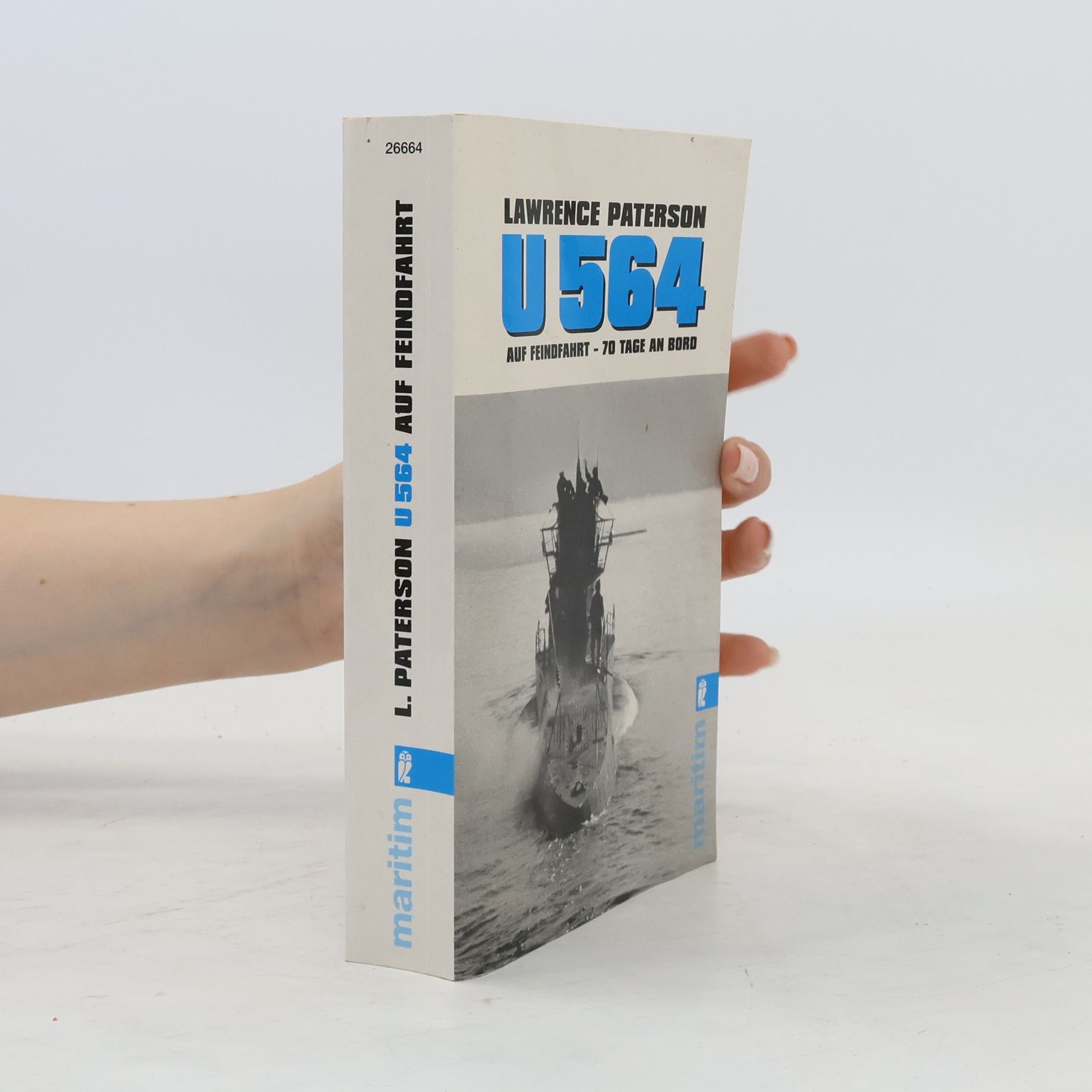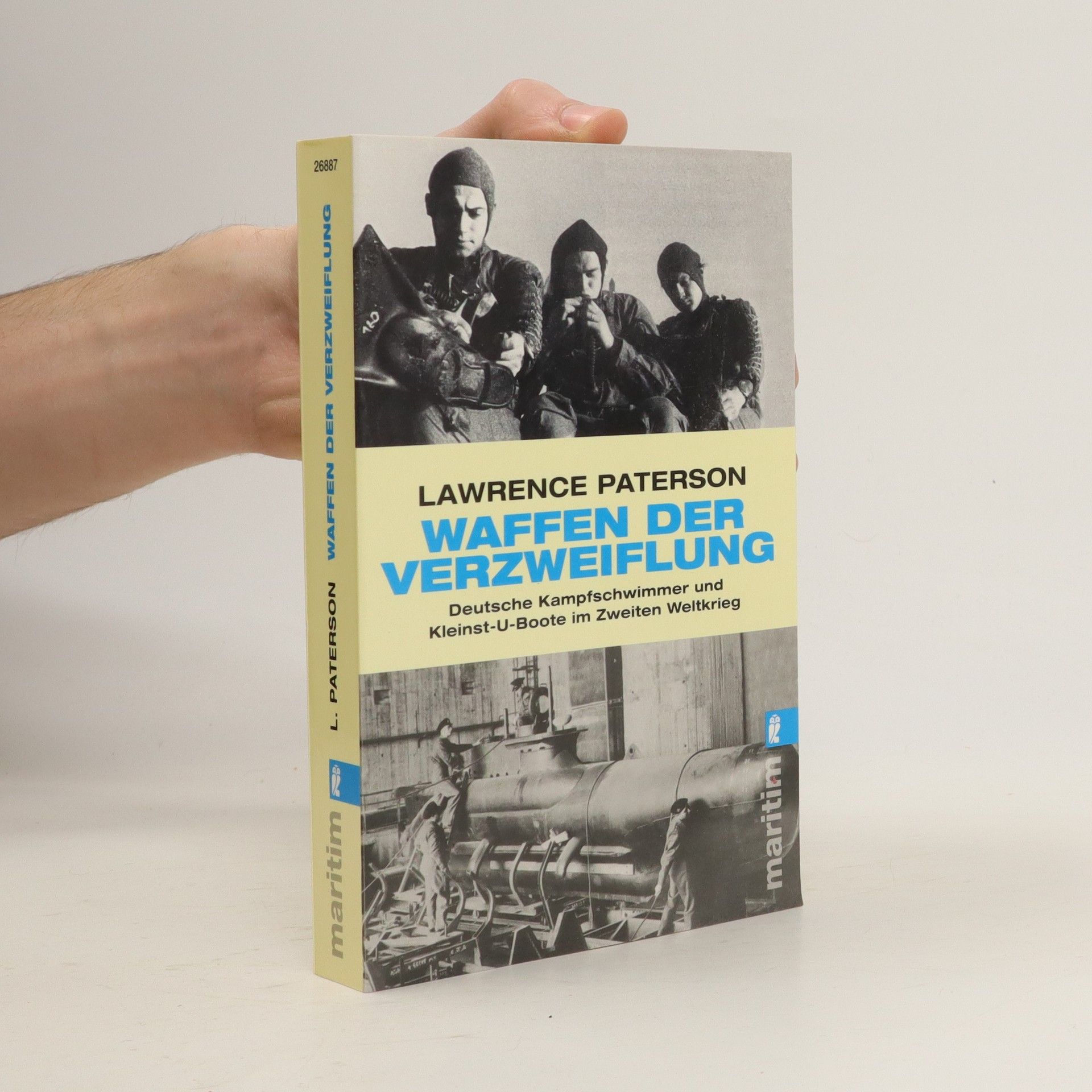Als sich die militärische Niederlage im Zweiten Weltkrieg immer deutlicher abzuzeichnen begann, griff die deutsche Kriegsmarine zu aberwitzigen Waffen und Methoden, um gegnerische Schiffe zu zerstören: Mini-U-Boote und Sabotageeinsätze durch Kampf-schwimmer etwa. Orientiert an den Erfolgen menschlicher Torpedos auf Seiten der Italiener und Engländer wurden Kleinkampfverbände geschaffen, deren Einsätze häufig selbstmörderischen Himmel-fahrtskommandos glichen. Auf Basis intensiver Recherchen gelang Paterson die detaillierte Rekonstruktion und Darstellung dieser verzweifelten Operationen.
Lawrence Paterson Bücher
Dieser Autor hegt eine tiefe Faszination für Geschichte, insbesondere den Zweiten Weltkrieg, was seine literarische Arbeit maßgeblich prägt. Seine Werke setzen sich mit den Verwicklungen historischer Ereignisse und menschlichen Schicksalen auseinander. Durch sein Schreiben bietet er den Lesern fesselnde Einblicke in die Vergangenheit. Diese einzigartige Perspektive auf die Geschichte bereichert seinen unverwechselbaren literarischen Stil.







Das Wappen von U 564 '3 x Schwarzer Kater' gehört zu den berühmtesten der deutschen U-Boote. 'Teddy' Suhren brachte es von U48 mit, auf dem er lange als I. WO fuhr. Als U-Boot-Kommandant wurde er zur Legende, nicht nur wegen seiner Erfolge, sondern auch als berüchtigtes Enfant terrible gegenüber dem militärischen und politischen Establishment. Der neuseeländische Marinehistoriker Paterson vermittelt einen Einblick in das Leben und die Aufgaben an Bord während dieses Karibik-Einsatzes.
A detailed examination of the before, during and after of Operation Colossus, the first British airborne raid of WWII. Draws on interviews with relatives of some the men involved and unearths previously unknown facts and information.
The history of fast attack craft is a perennial favourite amongst naval enthusiasts. New, affordable paperback edition. Large selection of rare photographs.
Fallschirm-Panzer-Division 'Hermann Goering'
- 320 Seiten
- 12 Lesestunden
A comprehensive, detailed and unbiased history of Hermann Goring's panzer division.
First U-Boat Flotilla
- 224 Seiten
- 8 Lesestunden
Formed in 1935, First U-Boat Flotilla operated against Hitler's enemies from the very earliest stage of the war through to September 1944 when disbanded amid the flames of Brest during the US siege. Over seventy-five per cent of operational U-boats were lost as the Allies' counter-measures and code-breaking successes took ever greater effect. This fascinating work records the Flotilla's successes and disasters in detail.
Eagles over the Sea, 1943-45
- 448 Seiten
- 16 Lesestunden
The first ever full account of all the Luftwaffe's naval operations, detailed yet highly readable account, contains a superb collection of rare photographs.
A well-illustrated history of a hitherto untold and ignored U-boat story
"The first complete history of the U-boat war in its entirety, a story which began on the very first day of hostilities in 1939 and did not end until the final torpedo sinking on 7 May 1945. It details the Wehrmacht's disastrous decision to despatch Dönitz's U-boats to the Mediterranean; the actions of U-boats at the extremities of the Eastern Front, where, despite the legendary destruction of the PQ17 convoy, they failed to turn the tide of war; and smaller but crucial operations throughout the Indian Ocean and southern Africa. What becomes increasingly clear throughout these dangerous and costly deployments is how U-boat operations were inexorably tied to an increasingly inefficient global naval stategy. This ... book details the U-boats' often direct relationship with land, sea and aerial campaigns of both the Allied and Axis powers, dispels certain accepted mythologies, and reveals how the ultimate failure of the U-boats stemmed as much from chaotic German military and industrial mismanagement as it did from Allied advances in code-breaking and weaponry"--Dust jacket flap.
Otto Kretschmer. Život německého ponorkového velitele s nejvyšším skóre potopené tonáže
- 296 Seiten
- 11 Lesestunden
Otto Kretschmer bojoval ve válce od září 1939 do března 1941 a stal se nejúspěšnějším ponorkovým velitelem, když potopil 47 lodí o celkovém výtlaku 274 333 tun. Tento autoritativní životopis zachycuje jeho osobní příběh a kariéru námořního důstojníka od 1. dubna 1930, kdy vstoupil do malého námořnictva Výmarské republiky, až do roku 1970, kdy odešel do důchodu jako admirál Spolkové republiky Německa. Kretschmer byl přijat do Hitlerovy ponorkové zbraně v lednu 1936 a v říjnu 1937 převzal velení ponorky U-23. Poprvé vyplul do boje v roce 1939 a na jaře 1940 prokázal své schopnosti, když byl převelen na výkonnější U-99. Během bitvy o Atlantik se stal jedním z nejznámějších ponorkových es, dokud nebyl v březnu 1941 jeho ponorka potopena a on zajat. Kretschmer byl průkopníkem nových taktik, útočil v noci a vynořený, a jeho pruská málomluvnost mu vynesla přezdívku „Tichý Otto“. Životopis podrobně popisuje jeho vojenské úspěchy, každou bojovou plavbu a zároveň nahlíží do jeho tajemné osobnosti, což činí tento příběh fascinujícím a významným v kontextu druhé světové války.
